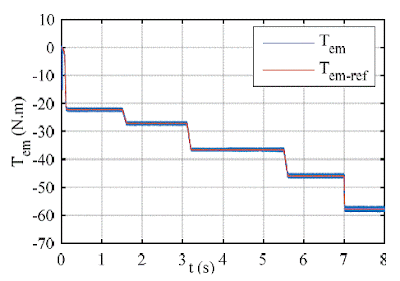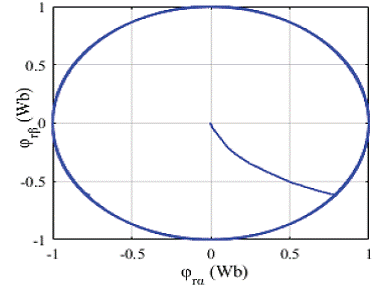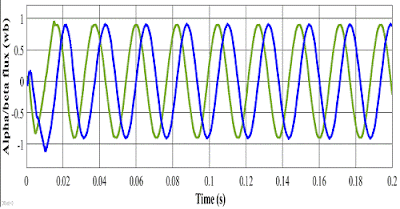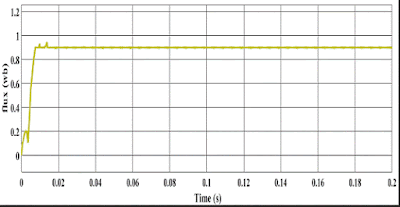This
paper presents a comparative analysis of different energy management schemes
for a fuel cell based emergency power system of a more electric aircraft. The
fuel cell hybrid system considered in this study consists of fuel cells,
lithium-ion batteries and supercapacitors, along with associated DC/DC and DC/AC
converters. The energy management schemes addressed are state-of-the-art, most
commonly used energy management techniques in fuel cell vehicle applications
and include: the state machine control strategy, the rule based fuzzy logic
strategy, the classical PI control strategy, the frequency decoupling/fuzzy
logic control strategy and the equivalent consumption minimization strategy
(ECMS). The main criteria for performance comparison are the hydrogen
consumption, the state of charges of the batteries/supercapacitors and the
overall system efficiency. Moreover the stresses on each energy source, which
impact their life cycle, are measured using a new approach based on the wavelet
transform of their instantaneous power. A simulation model and an experimental test
bench are developed to validate all analysis and performances.
KEYWORDS:
1. Fuel
cells
2. Batteries
3. Supercapacitors
4. DC-DC
converters
5. Energy
management
6. Hybridization
7. Optimization
SOFTWARE: MATLAB/SIMULINK
BLOCK DIAGRAM:
Fig.
1. Overall system schematic
Fig.
2. Simulation and experimental results for all EMS schemes: (a) Simulation
results. State machine control (b) Experimental results. State machine control (c)
Simulation results. Rule based fuzzy logic (d) Experimental results. Rule based
fuzzy logic (e) Simulation results. Classical PI control (f) Experimental results.
Classical PI control (g) Simulation results. Frequency decoupling and fuzzy
logic (h) Experimental results. Frequency decoupling and fuzzy logic (i) Simulation
results. ECMS (j) Experimental results. ECMS
CONCLUSION:
This
paper presented a performance comparison of different energy management schemes
for a fuel cell hybrid emergency system of more electric aircraft. The hybrid
system is modelled and validated with experiments. Five state-of-the art commonly
used energy management schemes are studied through simulations and experimental
tests on a 14 kW fuel cell hybrid system. The same initial condition is used
for all the schemes and the experimental results are close to simulations. The
criteria for performance comparison are the hydrogen consumption, the battery
state of charge, the overall efficiency and the stress seen by each energy
source. The latter is measured using a new approach based on wavelet transform.
Compared to the other schemes, the state machine control scheme provided a
slightly better efficiency (80.72%) and stresses on the battery and
supercapacitor (_ of 21.91 and 34.7 respectively). The classical PI control
scheme had the lowest fuel consumption (235 g of H2 consumed) and more use of
the battery energy (SOC between 70 - 51 %). As expected, the lowest fuel cell
stress (_ of 12.04) and lowest use of the battery energy (SOC between 70 - 59
%) was achieved with the frequency decoupling and fuzzy logic scheme, but at
the expense of more fuel consumption (245 g of H2 consumed) and lower overall
efficiency (79.32 %). The DC bus or supercapacitor voltage was maintained
nearly constant (_ 270 V DC) for all the schemes. To conclude, the energy
management system suitable for MEA should be a multi-scheme EMS such that each
scheme is chosen based on a specific criterion to prioritize. As an example, depending
on the operating life of each energy source, the energy management strategy can
be chosen to either minimize the stress on the fuel cell system, the battery
system or supercapacitor system, hence maximizing the life cycle of the hybrid
power system. Also if the target is to reduce the fuel consumption, the
strategy based on the classical PI or ECMS could be selected. An alternative is
to design a multi-objective optimization EMS to optimize all the performance
criteria, which is the next topic for further studies.
REFERENCES:
[1]
P. Thounthong and S. Rael, ”The benefits of hybridization”. IEEE Ind. Electron.
Mag., vol.3, no.3, pp.25-37, Sept. 2009.
[2]
P. Thounthong, S. Rael and B. Davat, ”Control Strategy of Fuel Cell and Supercapacitors
Association for a Distributed Generation System,” IEEE Trans. Ind. Electron.,
vol.54, no.6, pp.3225-3233, Dec. 2007.
[3]
Z. Amjadi and S. Williamson, ”Power-Electronics-Based Solutions for Plug-in
Hybrid Electric Vehicle Energy Storage and Management Systems,” IEEE Trans.
Ind. Electron., vol.57, no.2, pp.608-616, Feb. 2010.
[4]
G. Renouard-Vallet ,M. Saballus, G. Schmithals , J. Schirmer, J. Kallo and A.
K. Friedrich, ”Improving the environmental impact of civil aircraft by fuel
cell technology: concepts and technological progress,” Energy Environ. Sci.,
2010,1458-1468.
[5]
G. Renouard-Vallet ,M. Saballus, G. Schmithals , J. Schirmer, J. Kallo and A.
K. Friedrich, ”Fuel Cells For Aircraft Applications,” ECS Trans., 2011, Volume
30, Issue 1, Pages 271-280.























